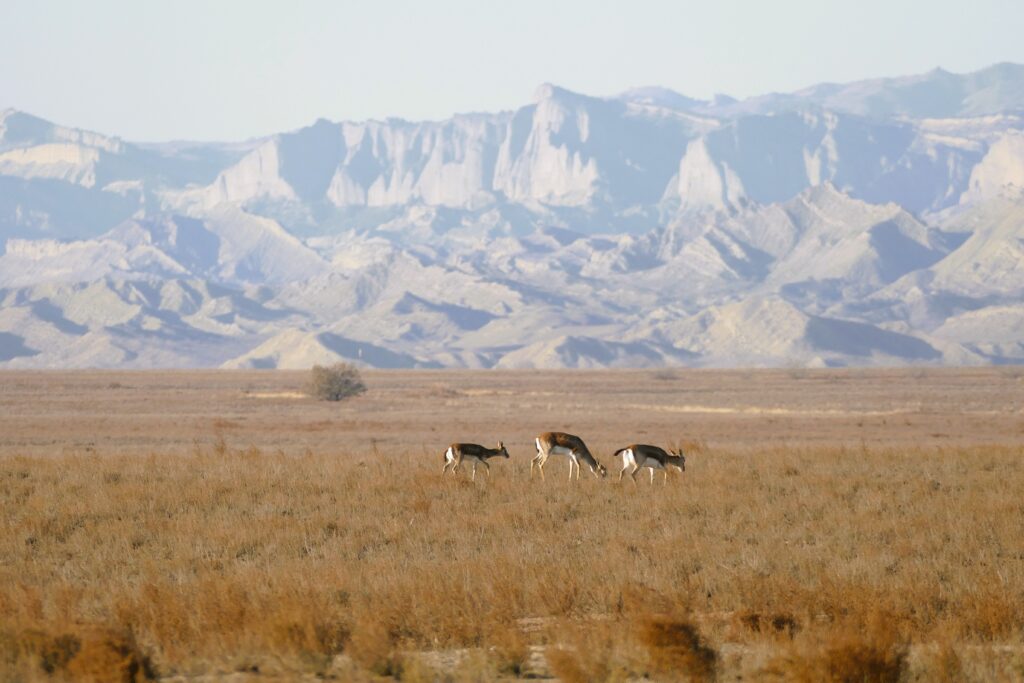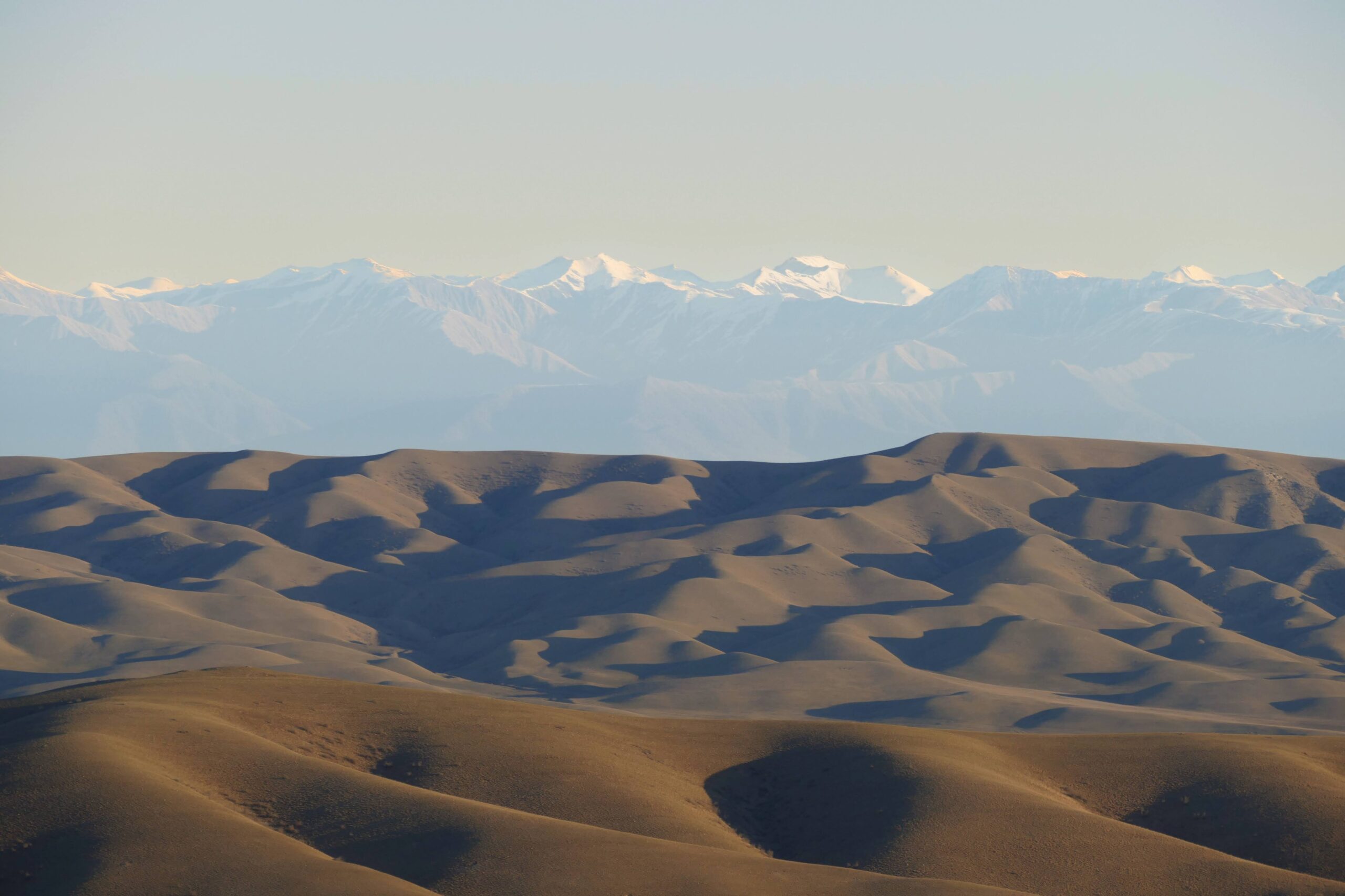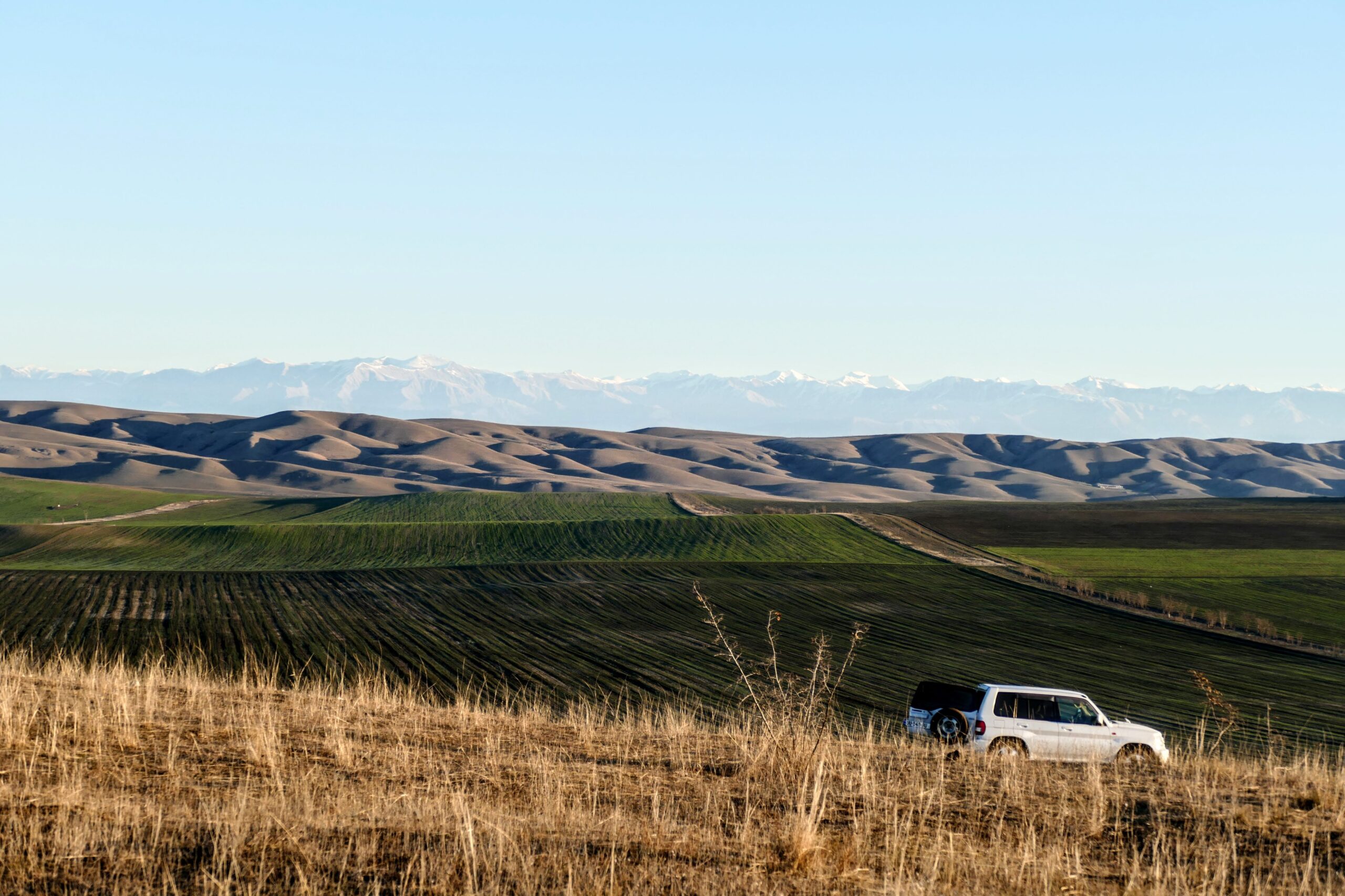“Vashlovani is brilliant. And people want to be close to brilliance”. This is how Amiran Kodiashvili, co-founder of the ‘Friends’ Association of Vashlovani Protected Areas’, employee of GIZ and former deputy director of Vashlovani Protected Areas, describes the landscape in the South-eastern corner of Georgia, close to the Azerbaijan border. When it comes to Georgia’s most diverse region, Vashlovani Protected Areas is on the top of the list and a personal favourite of many conservationists, but to the wider public it is still much less known than the majestic mountains of the Greater Caucasus. On the area of 35 067 ha, the landscape changes from semi-desert encompassing limestone cliffs and narrow valleys to steppe, forest steppe and deciduous mixed forests, providing home to over 700 species of plants and rich wildlife, once including the elusive Caucasian leopard.
It is also the only region in Georgia which was once inhabited by the goitered gazelle (Gazella subgutturosa) as part of its distribution in the South Caucasus, Central Asia and beyond. However, due to the unsustainable level of hunting and poaching since the 1930s, the range and numbers of this medium-sized grazer declined rapidly from tens of thousands to only less than 200 individuals in the whole Caucasus ecoregion, and in the 1960s, the species became extinct in Georgia and in most parts of Azerbaijan. After its total extirpation from Vashlovani in the 20th century, the area nowadays hosts over 200 goitered gazelles thanks to trans-border cooperation and some trial and error. We had the chance to meet some of the key players who contributed to what eventually became a conservation success, while also being able to observe these majestic animals with our own eyes.
Sharing the pastures
The goitered gazelle is the only member of the Antilopinae subfamily occuring in the Caucasus, and the species undoubtedly had a critical role in shaping the landscape, vegetation and thus biodiversity of the region. The steppes of Vashlovani Protected Areas, including Chachuna Managed Reserve, have been used for millennia as winter pastures by semi-nomadic pastoralists from the regions of Tusheti and Kakheti. However, with the disappearance of the gazelles, Vashlovani Protected Areas lost its only large natural grazers completely.





Each year between October and April, shepherds bring down their livestock from the mountains to their winter pastures in Vashlovani.
Within a study focusing on the feasibility of reintroducing goitered gazelles in Georgia, the NGO NACRES studied the vegetation quality and found that much of the pasture within the protected areas are in fact under-utilised or not utilised sustainably, resulting in the loss of finer grasses and herbs favoured by gazelles. The gazelles all-year-round presence as selective grazers can improve pasture conditions. Therefore, the reintroduction of gazelles provides an opportunity to improve pasture management and create a connection between the pastoralist community and wildlife protection.
Third time’s the charm
Amiran, who was involved in the gazelle reintroduction from the beginning, tells us that the current population of goitered gazelles is the result of the third reintroduction attempt. The first two were carried out using bred individuals in 1988-1990 from Uzbekistan and in 2008-2012 from Turkey. However, both previous attempts failed.
The first time, within the project ‘Rehabilitation of gazelles in Soviet countries’ in 1989, ten gazelles were brought to Vashlovani from the Bukhara Breeding Centre in Uzbekistan. Amiran was part of the team who was deployed to Uzbekistan.
“Taking those ten gazelles by aeroplane from Uzbekistan to Georgia was quite a bureaucratic nightmare and we were almost denied boarding. However, the order came from Moscow, and finally, we managed to bring them here.” he tells us. However, they didn’t have a chance to gain freedom in Georgia. Flaws in the fence design of the Georgian breeding centre enabled wolves to easily enter into the pre-release enclosure, and all gazelles were killed.
In 2008, a deal was made with the Ministry of Environment and Forestry of the Republic of Turkey, to assist Georgia in its efforts to reintroduce the goitered gazelle. A breeding enclosure was constructed in Vashlovani, this time with a suitable electric fence around the enclosure. Eleven gazelles, nine females and two males, were brought in 2010 and released into the breeding enclosure. However, the gazelles have decreased in number and by 2012 only six remained. Even young animals, which were born in the enclosure, died after a few months due to unknown causes. Experts conclude that the unusually severe winter of 2011-2012, as well as the low genetic variability of the founder animals led to the second failed reintroduction effort.
Therefore, the reintroduction strategy was changed, and experts decided to adopt a hard release (wild-to-wild) approach without keeping animals in a pre-release enclosure in the Gazelle Reintroduction Programme coordinated by WWF Caucasus.
“At that time, large reintroduction efforts were taking place in Azerbaijan as well, and therefore Shirvan National Park in Azerbaijan was selected for the source population in Georgia, aiming to re-establish an interconnected gazelle metapopulation in the Caucasus.” Mariam Robitashvili and Nino Peradze from WWF Caucasus in the Tbilisi office explain.


Initially, animals were released directly in Vashlovani National Park. The first transportation crossing the Azerbaijan-Georgia border happened in 2013, but due to unexpectedly long border procedures, one of the ten gazelles died from stress. In addition, of the nine gazelles released in Vashlovani, all three collared animals were killed by predators in a two-month period and the others disappeared.
Therefore, experts decided to change the transportation method as well as the release site once more. From December 2013 (and all following years), gazelles were released on the Azerbaijan side of Eldari plain, close to the Georgian border. This reduced transportation time and avoided lengthy border procedures.
“We were all eager to see what would happen. Population growth in the first years was slow on both sites, the gazelles eventually moved to the Samukhe plain, and finally, since 2019, a rapid increase has been observed. From about 60 reintroduced individuals, we have over 200 gazelles living in Vashlovani nowadays.”
Amiran Kodiashvili
A truly joint effort
The Gazelle Reintroduction Programme is implemented by WWF Caucasus in close cooperation with the governments of Azerbaijan and Georgia, together with the German Federal Ministry for Economic Cooperation and Development, the German state development bank KfW and WWF Germany. A local ranger and WWF employee is assigned to monitor the areas where relocations occur and the growing gazelle population. “Since the start of the project, we’ve witnessed great breeding success, and eight new generations of goitered gazelles have been born in Samukhe plain.” explains Mariam from WWF Caucasus.
Moreover, the IUCN SSC Antelope Specialist Group, NACRES, Fauna & Flora International and GIZ (Deutsche Gesellschaft für Internationale Zusammenarbeit) were all involved in assessing the feasibility of the reintroduction programme and developing recommendations to ensure its long-term success.
The brilliance of Vashlovani
To understand the essence of Vashlovani that captured the hearts of so many conservationists we met in Georgia, naturally, we had to go there ourselves. We were accompanied by Temur Popiashvili from NACRES, who lived his whole life around Vashlovani and knows it like the palm of his hand. Temo cares for this area deeply, he worked in Vashlovani Protected Areas himself before and is active in the board of ‘Friends’ Association of Vashlovani Protected Areas’. Being a hobby nature photographer, he grabbed his camera and we ventured into Vashlovani together.
The shapes and patterns of Vashlovani Protected Areas
Also called the ‘Georgian Savannah’, the towering limestone cliffs and arid valleys of Vashlovani are home to a particularly rich bird life. Imperial eagles, griffon vultures, black vultures, marsh harriers, buzzards, pheasants are just some of the 100 native bird species here. For a long time we follow windy dirt roads along arid ridges, which eventually leads us into a dried up riverbed in a carved-out canyon. Temo points out attention to the layers forming the canyon walls – sea shells form clearly visible elements of the wall. They stem from the time two million years ago when the local territories were covered by the sea. Unfortunately, we also find several empty shotgun cartridges left behind by poachers. As in Lagodekhi and other protected areas in Georgia, poaching poses a huge problem for wildlife in Vashlovani.






Exploring the secret passages in Vashlovani. (Photos 4-6 by Temur Popiashvili)
We decide to follow smaller crevasses up to a high mountain peak. On the way, we regularly see bear scat and porcupine needles, and as we climb higher up, we spot our first vultures. Our gazes fixated on them, we make our way up and we are rewarded by the most amazing wildlife encounter. Over 20 griffon vultures and a few black vultures are circling in the sky and resting on the cliffs underneath us. We hear their wings flapping as they pass us, and we are at awe.





Contrary to common misconception, vultures don’t, in fact, circle above dead things. And they most certainly do not circle above dying things like in the movies, patiently waiting for their target to fall dead. They are most probably just scouting, gliding by using a strong thermal of warm air rising from the ground. (Photos 4-5 by Temur Popiashvili)
As we descend, we make our way to the Samukhe plain. We find little bustards, wintering here in flocks of thousands, who loudly react to all of our attempts of getting closer by flying away – an incredibly rare sighting. And finally, we encounter our first goitered gazelles, including several young ones, who are once again grazing the land they shaped for thousands of years. And today, they gazelles and sheep graze alongside each other.












